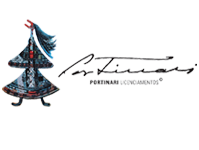General Info
Professional track record; journalism and research of contemporary Brazilian art; research and cataloguing of Tarsila do Amaral's life and work; cataloguing reduces the chances of fakes; difficulties in obtaining technical expertise; Portinari, the official painter of the Vargas’ regime; faithfulness to academic background; drawing as a structural foundation in Portinari's painting; historic aspect having a strong bearing on the body of work; from Mexican muralists to an entirely new influence; Picasso; lack of ideological coherence in Portinari's work; the works for the Italian Embassy in the '30s; Portinari's influence dominant in the new generation of Brazilian artists; cultural rivalries between "cariocas" and "paulistas"; in São Paulo education allocated more government funds and less official attachment; the Brazilian artists neither settle nor compete abroad; Antonio Dias; Portinari's audacity in the use of huge spaces; the importance of professional management as the key to artist's exposure; Portinari's pictorial procedures facinate his assistants; technical difficulties in painting larger spaces; sacred themes; the churches of Batatais and Pampulha; Oscar Niemeyer; decade of '40 witnesses the integration between architecture and art; the projection of their childhood both in Tarsila do Amaral's art and Portinari's; Oswald de Andrade; disruption between intellectuals and the system begins in 1935; Gustavo Capanema; artists and intellectuals support or affiliate themselves to the Communist Party all over Latin America; relationship between Portinari and the Communist Party; Tarsila do Amaral writes about Portinari; Portinari paints the panels for the Library of Congress during goodwill policy period of Vargas' government and the American State Department; Paulo Duarte; Portinari criticized for overshadowing emerging painters; even when Rio de Janeiro is the Brazilan state that exerts more cultural domination, it does not generate important cultural events; São Paulo gathers the modern, the provincial and the cosmopolitan; Aracy Amaral's last work revolves around social concern within Brazilian art and Portinari stands out when the political conscience of the Brazilian artistic class emerges; the artistic movement in Rio Grande do Sul; Mário Pedrosa's texts about Portinari; ill-fated foray into the Abstract; many artists face a dilemma in their careers at the age of 50; both criticism and market pressures take their toll; the artist and critic Carlos Zílio.
























































